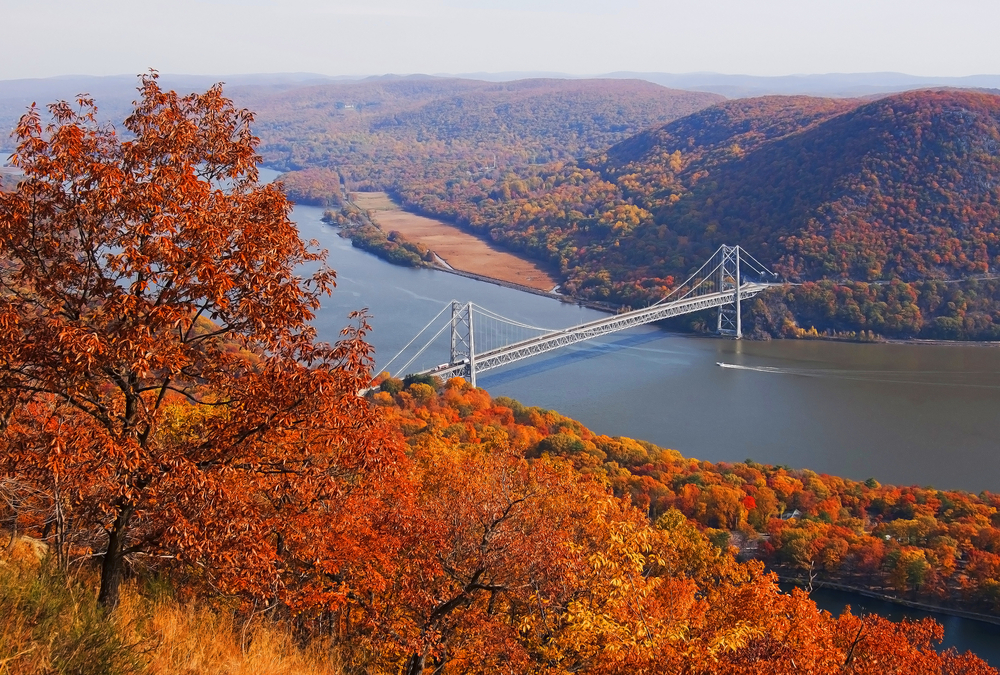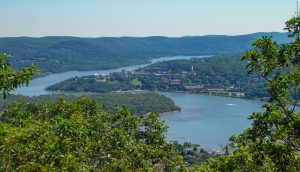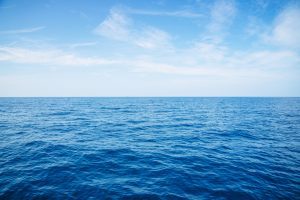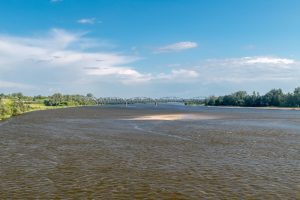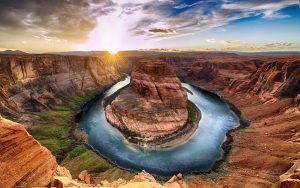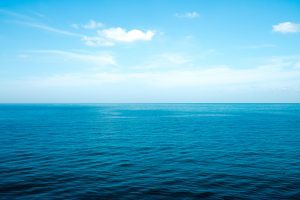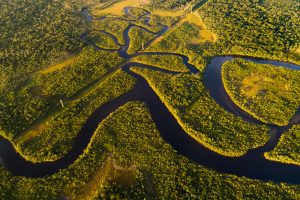The Hudson River has a maximum depth of 216 feet at its deepest point and is approximately 30 feet deep elsewhere.
The Hudson River is also the deepest river in the United States, and runs from New York to New Jersey, emptying into the Atlantic Ocean.
The history of the river is fascinating, having begun as an estuary over 13,000 years ago.
The Hudson River at its deepest point is 216 feet deep but is on average 30 feet deep for the rest of its length.
It is the deepest and longest river in the United States and was named after Henry Hudson who sailed it for the East India Company.
The river runs from North to south through both New York and New Jersey and is a focal point for many towns on the Eastern seaboard in these states.
Table of Contents
What is the geography of the Hudson River?
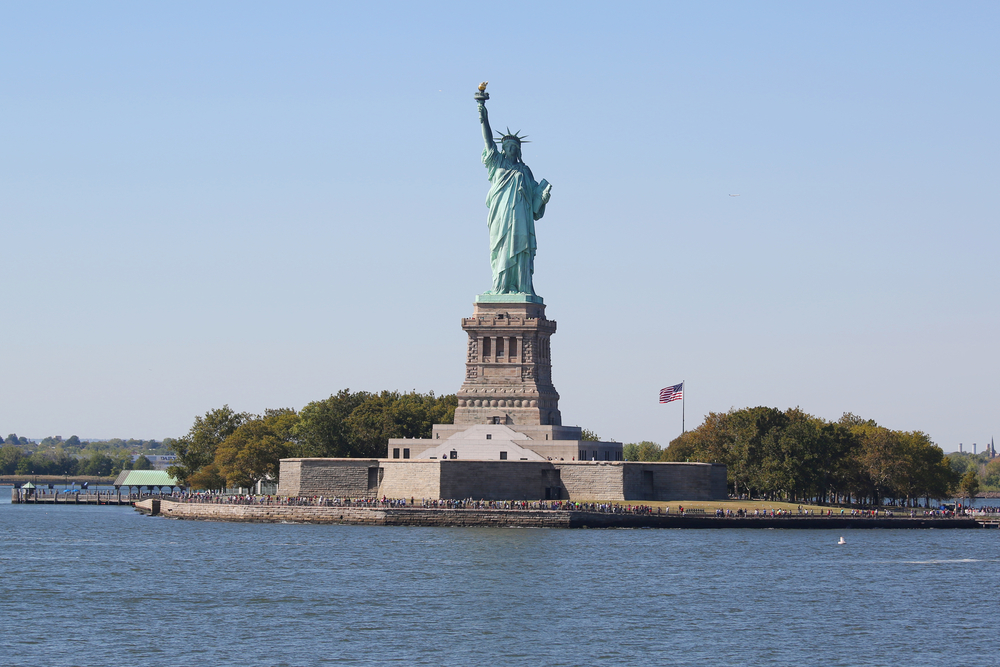
The Hudson River’s deepest point is 216 feet deep and is located between Constitutional Island in New York City and Gee’s Point.
At its widest point, the Hudson River is approximately three miles in width. This river was formed when the infamous Wisconsin glacier created large sea levels near the opening of the river, causing it to rise, or deepen along some points of the river.
The Hudson River also has fjord locations – a narrow body of water where glaciers join to melt together.
Norway and Iceland are known to be home to a large number of fjords due to their longitudinal and latitudinal locations.
A fjord is recognizable by its large masses of land that border an inlet of water.
This is when a body of water has land along each of its sides. This land is old glacier rock that hardened, and the body of water in the middle is the convergence of melted water from the old glaciers.
The location of the Hudson River in the northern section of the United States lends to its fjord development.

What is the location of the Hudson River?
The Hudson River is in many locations throughout the states of New Jersey and New York. It begins in the Adirondack Mountains, and it ends in New York City.
The river begins in an area called the Lake Tear of the Clouds and flows 315 miles into New York state.
The Hudson River has three mouths. They are located in the New York Harbor, the Lower New York Bay, and the Upper New York Bay.
The Upper New York Bay is where the river ends in New York City.
There are many cities that the river runs through in the United States including:
- Albany, New York
- Beacon, New Jersey
- Glens Falls, New York
- Hudson, New York
- Jersey City, New Jersey
- Kingston, New York
- Mechanicville, New York
- New York, New York
- Newburgh, New York
- Peekskill, New York
- Poughkeepsie, New York
- Troy, New York
- Yonkers, New Jersey
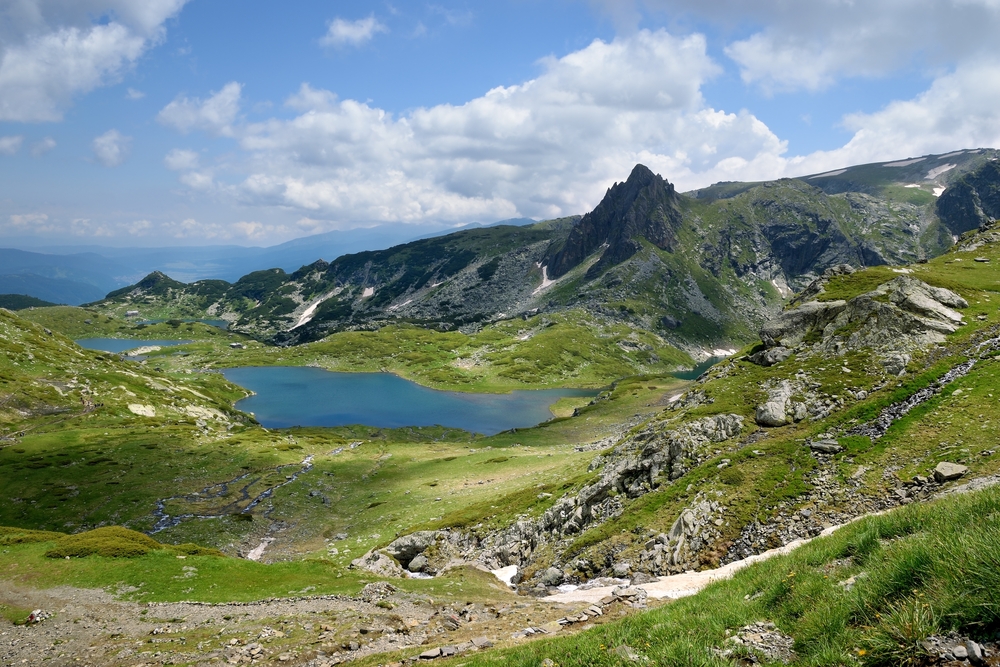
Although the river flows between the two states, it flows almost exclusively in New York. Of its 315 miles in length, only 21 miles are in New Jersey and along the New Jersey and New York border.
The history of the Hudson River goes back hundreds of years to when it was first discovered or known by the Mohican Native Americans.
These Native Americans were also called the Muhkeakunnuk Indians, a name that translates to Great Waters Constantly in Motion.
Although the Mohicans were the first to live here, the river really started thousands of years prior when glacial formation began.
The first known navigator on record in history was Giovanni da Verrazano in 1524. By 1609, Henry Hudson made it his.
Tarrytown, the locale for the age-old stories of Washington Irving took place here in 1629, creating a backdrop for the Hudson River School of Landscape Painting and Architecture.
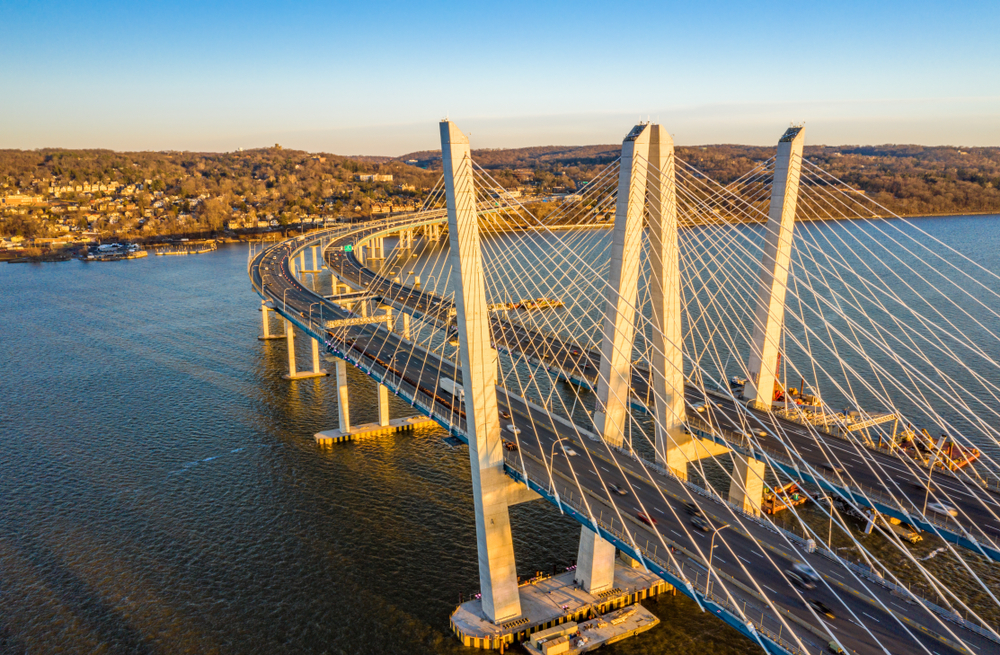
The American Revolution used the Hudson River as a key water path and location for a number of battles, such as Tappan Zee and Saratoga.
Here, Benedict Arnold embarked on one of his more famous missions where he anchored near Garrison shortly after he was branded a traitor by the Americans.
Today, the United States Military Academy known as West Point overlooks the Hudson River, a river that was also overlooked by the homes of United States presidents President George Washington and President Franklin D. Roosevelt.
What is the geographical history of the Hudson River?
The geographical history of the Hudson River starts with its story as an estuary, a river that flows in two directions.
Although the land around it was first inhabited by the Mohicans, the river became the home to two canals in the early nineteenth century.
Those canals were located and managed water in the Champlain, Erie, Hudson, and Delaware valleys.
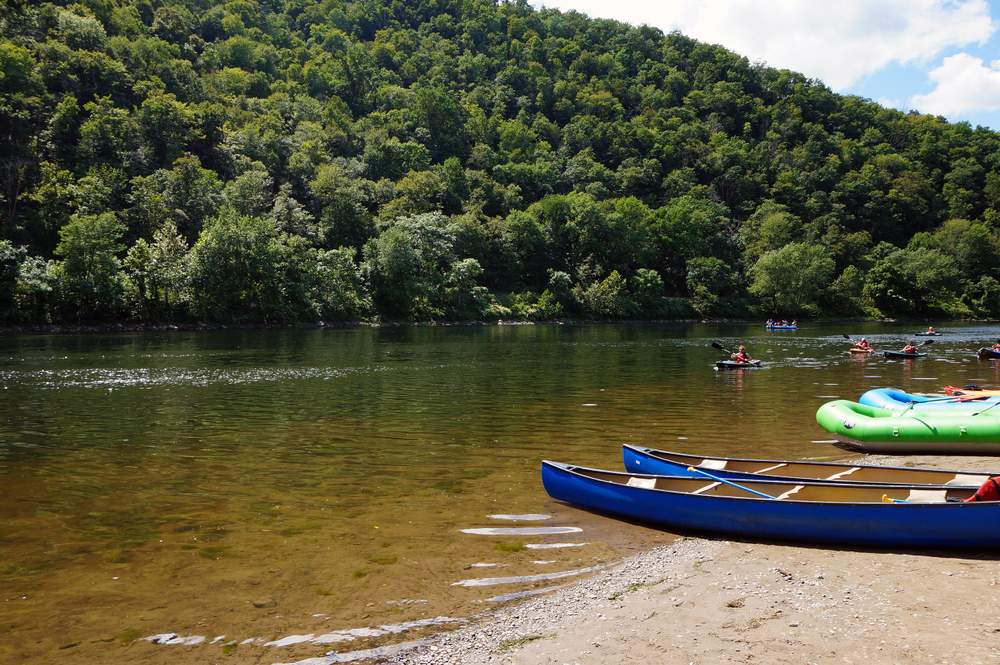
By 1807, the steamboat was invented, and the Hudson River became a key location for commercial transportation of goods and services.
Every town that was bordering the river would be home to a new economy that included trade and mercantile fleets.
At the time, shipping was a key business that delivered many key goods and services like cocoa beans, steel, wood pulp, and grain, to the communities that lived on the Hudson River.
Between 1797 and 1892, the federal government declared the Hudson River a federal landmark and waterway, protecting it as a key commercial route for goods and services.
The river became a key location for service to Albany, the capital of New York State. It was not long before locals began noticing the pleasurable facets of the Hudson River, utilizing it not just for trade but for recreational activities and boating between May and November every year.
What is the geology of the Hudson River?
The Hudson River is unique from a geological perspective, containing both a freshwater and saltwater combination.
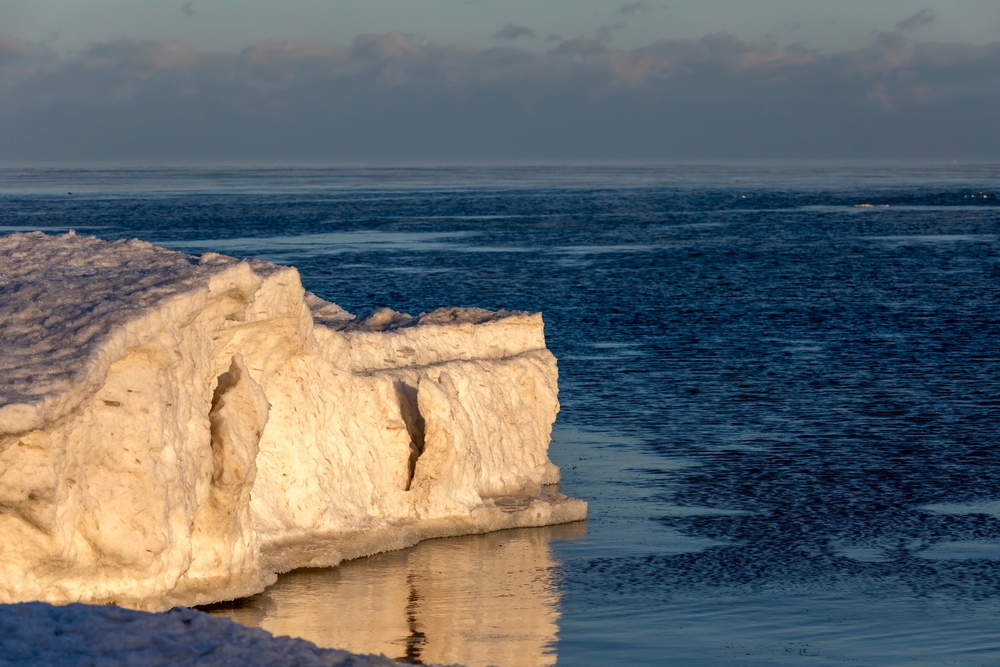
It is an estuary, a river that flows from north to south in many directions and has been called a “drowned river” as a result of its depth caused by the Wisconsin Glacier.
The Wisconsin Glacier formed the depth of the Hudson River and is also responsible for rising sea levels today.
In the lower section of the Hudson River, there are four tides every day, two low and two high tides.
The northern tidal current moves slowly but can still make the water very dangerous. In the winter, ice can be spotted drifting in both directions, and it is all dependent on the tidal current of the day.
The deepest part of the river is located near the West Point Academy and Constitutional Island.
In the south of the river, the Federal Dam is also home to a deep section of the Hudson River.
Major geological tributaries to the Hudson River include the Batten Kill River, Indian River, Schroon River, Cedar River, Boreas River, Croton River, Wallkill River, Wappinger Creek, Mohawk River, and more, for a watershed that encompasses Massachusetts, New York, New Jersey, Vermont, and Connecticut in an area that covers 21,000 square miles.
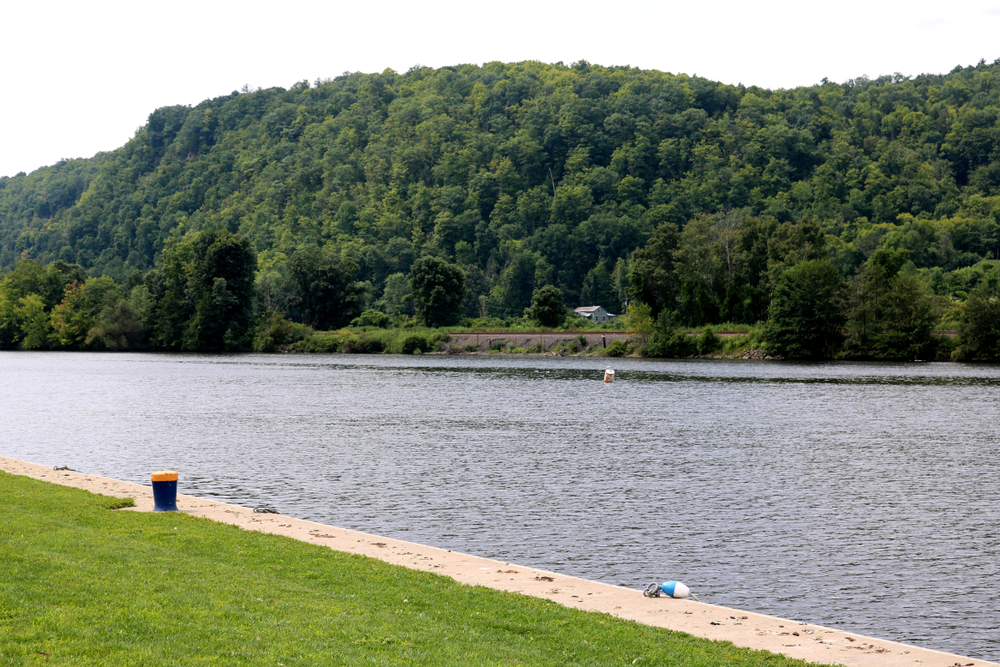
Does the Hudson River have a pollution problem?
The Hudson River has a known pollution problem that is consistently being monitored by the government.
There is a freshwater discharge of the river that goes to Troy and is said to occur at a rate of approximately 490 cubic meters per second but can be as high as 620 cubic meters per second.
The discharge of this water is reported to contain high levels of mercury, causing toxic mercury contamination in the surrounding areas.
This has resulted in a vast amount of raw sewage and waste, as well as urban runoff and other metals, being brought into the land and soil boundaries, and is a significant component of the pollution problem.
This level of waste discharge is the key to the known pollution of the Hudson River. There have been many conservationists and groups working to preserve both the river and the sustainability of all of its natural resources, and wildlife in the area.
There is much wildlife in the Hudson River and its surrounding cities, and this is wildlife that the communities around the river once depended on.
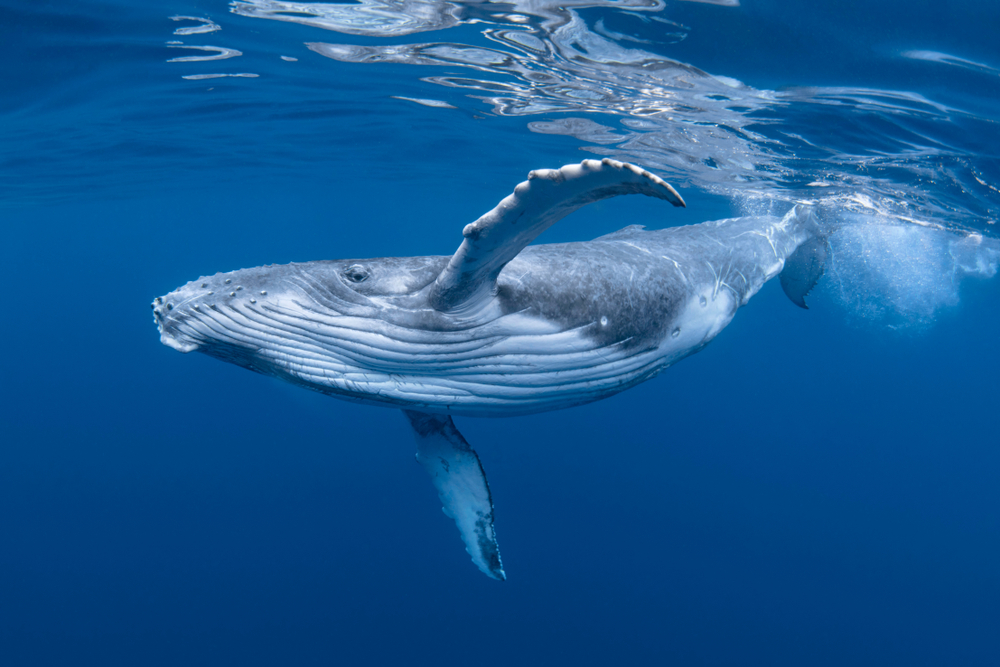
The fish from the river have been used as food for centuries but today may be too toxic to eat.
Other wildlife near the river, including humpback whales, are a significant focus of projects launched by conservationists on the Hudson River.
Is the Hudson River the deepest in the world?
No, the Hudson River is not the deepest river in the world, although it is on the top 10 list of deep rivers.
The deepest river in the world is the Congo River, located in Africa, which is 720 feet deep.
The second deepest river in the world is the Yangtze River which is located in China and is approximately 640 feet deep at its deepest point.
The Congo River is also one of the longest in the world and is the second-longest river on the continent of Africa at 2,715 miles.
The Congo River discharges at a rate of 1.4 million cubic feet per second. The course of the Congo River begins near the East African Rift.
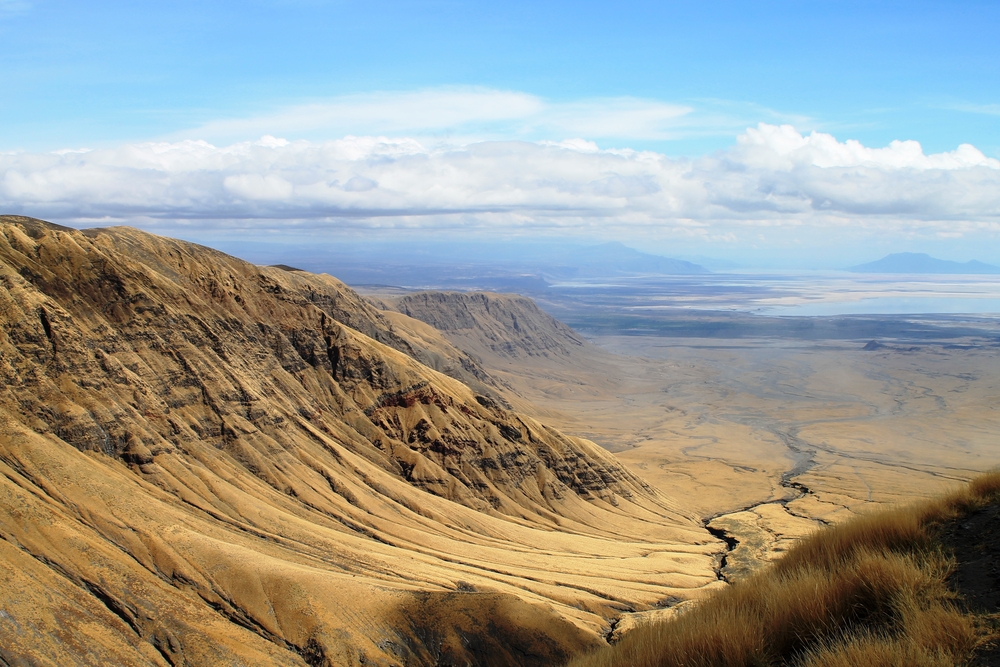
The Congo River is an important river to Africa, as all rivers are to the community around them.
In addition to being a key water source, it is also home to many species that feed African countries and provide refuge for the wildlife there.
The top ten deepest rivers in the world are as follows:
- Congo River (Africa): 720 feet deep
- Yangtze River (Asia): 656 feet deep
- Danube River (Europe): 584 feet deep
- Zambezi River (Africa): 381 feet deep
- Amazon River (South America): 328 feet deep
- Mekong River (Asia): 328 feet deep
- Yellow River (Asia): 262 feet deep
- Saint Lawrence River (North America): 250 feet deep
- Hudson River (North America): 216 feet deep
- Mississippi River (North America): 200 feet deep

